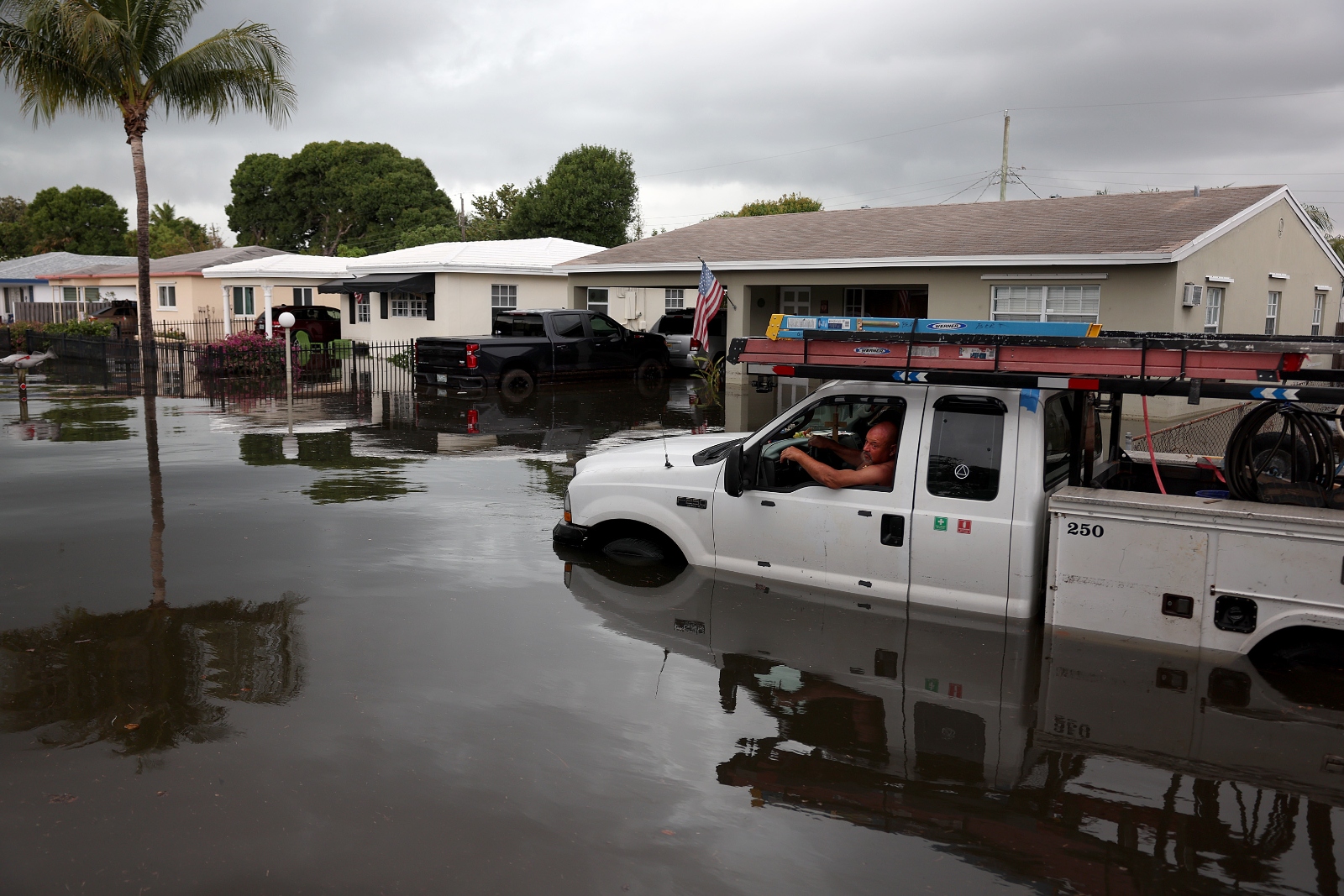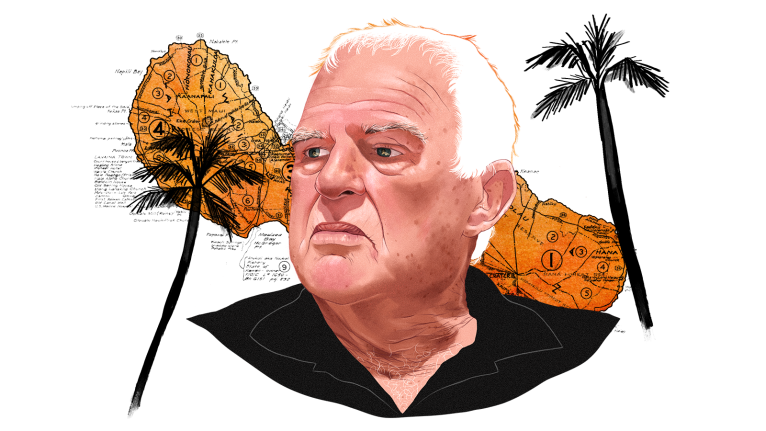You may not remember the tornado that swept through western Mississippi on the night of Friday, March 24, but Eldridge Walker does.
Walker, who is both the mayor and the funeral director of the town of Rolling Fork, said it’s still hard to fathom the destruction it caused in his town. The twister killed 17 people and injured another 165. It destroyed dozens of houses as well as City Hall, the fire and police stations, post office, elementary school, high school, and hospital — not to mention Walker’s home and business. The damages exceeded $100 million, and the cost of the storm that spun off the cyclone approached $2 billion.
Nine months later, the recovery remains a work in progress.
“It’s still going on, and it’s going to be going on as long as I’m mayor,” he told Grist this week. The tornado drew a flurry of national attention and a spot on Good Morning America, but aid was slower to arrive. Just a handful of the more than 700 people who lost their homes have managed to rebuild, and dozens still live in hotels, waiting on the federal government to find them temporary housing.
“They’ve got a lot going on to facilitate what they do for cities and municipalities after storms,” Walker said of the Federal Emergency Management Agency, or FEMA, which had to respond to a string of disasters in the months after Rolling Fork’s devastation. “I’m just pleased with the fact that I’ve had communication with them.”
While Walker waits, the destruction of Rolling Fork has vanished beneath headlines about wildfires, floods, and heat waves elsewhere. Millions of people have come to feel his pain: A November poll found that three-quarters of Americans experienced some kind of extreme weather in 2023.
By some metrics, this year was among the worst for climate disasters. The U.S. saw more weather events that caused at least a billion dollars in damage than at any other time on record. The emergence of an El Niño weather pattern pushed global temperatures higher than ever before in recorded history and caused a spate of deadly heat waves as well as catastrophic floods.
By other metrics, it was no more than an average year for a world that has warmed by more than 1 degree Celsius. No large hurricanes made landfall in big cities, and the western continental United States stayed free of megafires thanks to a wet winter. The year’s extreme weather has so far caused a cumulative death toll of around 373 people, much lower than last year’s tally of 474. Recent years, such as 2017, which saw multiple major hurricanes including Harvey and Maria, were many times deadlier and more expensive.
Even though media coverage of disasters tends to focus on superlatives such as “largest,” “deadliest,” and “most,” it’s not always helpful to compare one year to another, said Samantha Montano, a professor of emergency management at Massachusetts Maritime Academy and an expert on disaster response policy.
“I don’t know that there’s a ton of value in comparing one year to the next,” she said. “The way that disasters unfold, and the way that climate change unfolds, is in averages — we’re looking at how things evolve over time. When you start taking snapshots year to year, you know, that’s less useful.”
The National Oceanic and Atmospheric Administration, or NOAA, has maintained a tally of billion-dollar disasters since 1980, providing some of the most comprehensive data about the economic impact of extreme weather. This year saw 25 such disasters, the most on record, and NOAA’s map shows they left almost no corner of the country untouched. Maui saw the deadliest wildfire in modern U.S. history in August, the South baked beneath a monthslong drought, and Vermont experienced weeks of summer flooding. These catastrophes caused more than $80 billion in damages combined.

The number of billion-dollar disasters is increasing even when NOAA adjusts for inflation: There have been an average of eight-and-a-half such events annually since the agency started maintaining records in 1980, but the last three years have seen an average of 18 cross the billion-dollar threshold each year.
There are a few key reasons for this, says Adam Smith, the researcher at NOAA’s National Centers for Environmental Information who leads the agency’s work on such disasters. The first and most obvious is that climate change is making such catastrophes more severe.
“A large majority of our country was built and designed during the 20th century, but now exists in a 21st-century climate,” he said.
At the same time, said Smith, more people have moved into areas that are vulnerable to fires and flooding, raising the overall risk profile of the country and ensuring higher damages.
“You also have increasing vulnerability,” he said. “Where we build, how we build, and even more importantly, how we rebuild is increasingly important.”
Perhaps the most notable development from this year is the rising number of “severe convective storm” events in the South and the Midwest. These thunderstorms often spew hail and spin off tornadoes as they rip across open land. There were at least a dozen such storms that caused a billion dollars or more in damages this year, many of them in the spring and early summer, accounting for around half of the 10-figure disasters recorded in the last 12 months.
In a report that surveyed disasters in the first half of 2023, the insurance group Aon listed the emergence of these storms as one of the most surprising developments.
“As opposed to large, catastrophic events, which occasionally drive extreme losses from primary perils,” these storms are “characterized by higher (and increasing) frequency of smaller and medium-sized events.” Research suggests that convective storms tend to form more often and do more damage as the climate warms, since hotter air can hold more moisture.
In most years, the costliest disaster is a hurricane or a wildfire, but this year it was a drought in the central and southern United States: The dry spell stretched from Illinois to Louisiana, causing more than $10 billion in damages as it killed staple crops and forced farmers to sell livestock that had become too expensive to feed. It also lowered water levels on the Mississippi River, making river freight costlier. The fact that a drought claimed the top spot highlighted how much worse the year could have been, said Smith.
Even so, numbers don’t tell the whole story. Many of the most dramatic and harmful disasters of the year aren’t on NOAA’s roster at all, because the damage they caused is difficult to quantify. The most obvious example is the string of heat waves that baked cities from Chicago to Phoenix, which endured a month of consecutive 110-degree days. Searing temperatures sent hundreds of people to the hospital and killed dozens, but didn’t do as much damage to property and crops as a storm.
The wildfire smoke that blanketed eastern cities as it drifted in from Canada is another example. Even brief exposure to all those particulates can cause serious health effects for the elderly and people with lung disease, but such impacts are almost impossible to quantify.
Beyond the immediate financial impact for people who lose their homes, the knock-on effects can be harder to see. A big wildfire or storm can cause financial turmoil for insurance companies, which may raise prices or flee dangerous markets, as has happened in Florida and California. A widespread crop failure can raise domestic and international food prices. And the destruction of school buildings can cause learning loss for students, as happened in the rural communities outside Oklahoma City after a tornado outbreak in April.
“This is a solid, conservative estimate, using the best public- and private-sector data, but we’re not able to measure everything,” said Smith. “So the losses are actually higher than what we’re able to quantify.”
Even so, the news from 2023 isn’t all bad. The annual toll of climate disasters continues to rise, but the U.S. is spending more money than ever on climate adaptation. FEMA handed out more than $2 billion this year to help communities protect against coastal flooding and armor homes against wildfires, and these payments will continue in coming years under the 2021 bipartisan infrastructure bill. FEMA had to pause these projects over the summer as its all-important disaster fund ran low due to congressional inaction, but they’ve resumed.

An unexpected disaster can often come with a kind of silver lining, since it encourages local officials to rethink how they build and prepare for future losses. A big flood can expose hidden risk in a neighborhood or a certain kind of infrastructure. New York state invested in larger sea walls after 2012’s Superstorm Sandy, for instance, and Colorado’s legislature has recently tried to curb sprawl development after the 2021 Marshall Fire.
This was the case in Fort Lauderdale, Florida, which saw historic flooding in April when a sudden storm dropped more than 25 inches of rain on the city in a single day, submerging the airport and inundating several neighborhoods.
“I think everybody was taken off guard,” said Jennifer Jurado, the chief resilience officer for Broward County, which encompasses Fort Lauderdale. “Whether it was the county or the city, I don’t think that anyone could have fathomed what was about to take place.”
The city’s main thoroughfare went underwater, as did many commercial boulevards, and the on-ramps leading to the main interstate highway flooded too, which meant no one could move. The county had already been trying to raise money to upgrade its stormwater system in residential communities, but now officials knew they also had to invest in more pumps and drains for key highway entrances and commercial districts.
“Had we had an evacuation order, nobody could have left,” said Jurado. “That’s a startling circumstance to think that under the right conditions, you can’t evacuate.”
The April storm offered Fort Lauderdale a glimpse of what’s to come. In an eerie coincidence, the county’s resilience committee held a previously scheduled meeting hours before the flood. Jurado happened to unveil new computer models that showed what municipal flooding could look like in a world with three feet of sea-level rise, a large hurricane storm surge, and a big high tide. They predicted a flood that largely resembled the one that was about to happen right outside the county offices. Later, when Jurado tried to drive to the airport, she almost lost her car in the water.
Montano says the federal government needs a similar wake-up call. Congress has long punted on reforming FEMA and the nation’s disaster relief policy, but it’s only a matter of time before there’s a disaster bad enough that legislators feel pressure to act. That catastrophe didn’t arrive this year, but it is surely coming.




